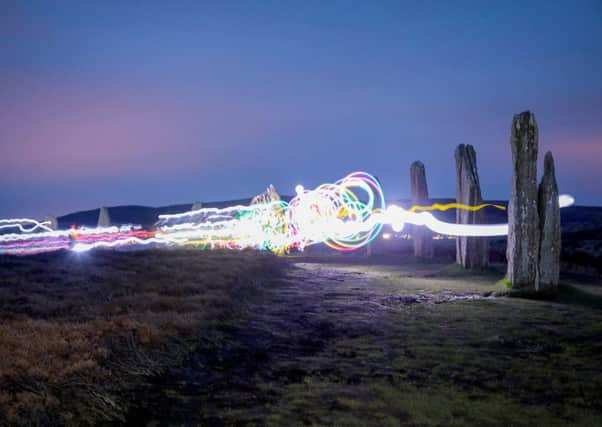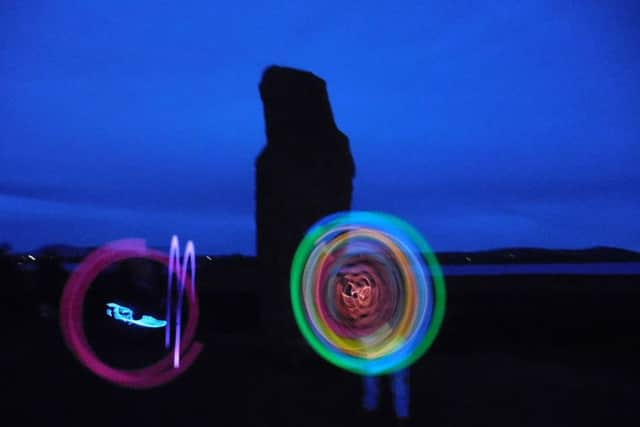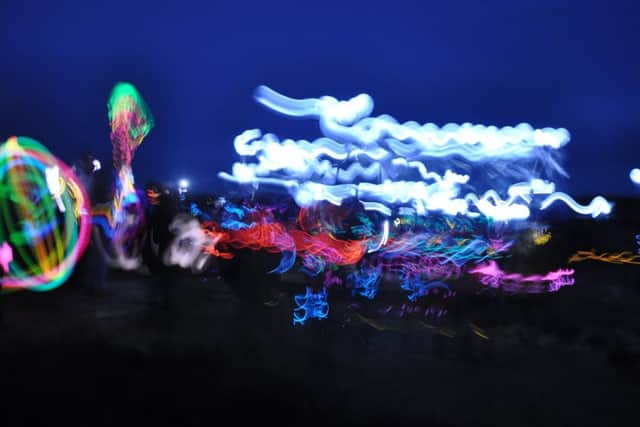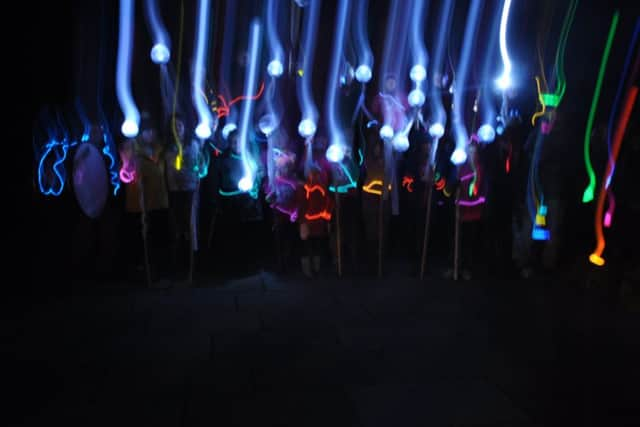VIDEO: Orkney's Ring of Brodgar glows in the dark


Revellers armed with light staffs led a nighttime procession to the Ring of Brodgar at Stenness and danced in the shadows of the sacred stones.
The event was organised by the Archaeology Institute at the University of Highlands and Islands and DigIt!2017 to mark World Heritage Day.


Advertisement
Hide AdAdvertisement
Hide AdMembers of Orkney Youth Café dug into their local history to help develop the celebration.
UV face paint and other final touches were applied at Skara Brae, before the young people led the procession of local people to the Ring of Brodgar.
Dating from 2,500 to 2,000 BC, the stone ring was built in a true circle, 104 metres wide and originally contained 60 megaliths.


Today, only 27 of these stones remain in the formation which is believed to have been built as astronomical observatory or a religious shrine and ritual site.
Advertisement
Hide AdAdvertisement
Hide AdThe Ring of Brodgar along with Stones of Stenness, Maeshowe and Skara Brae make up the Heart of Neolithic Orkney, which was awarded UNESCO World Heritage Sites status in 1999.
The five other sites recognised by UNESCO are Edinburgh Old and New Town, The Forth Bridge, The Antonine Wall, St Kilda and New Lanark.
Dig It! 2017, which is promoting the discovery of Scotland’s archaeology, has created a bucket list-style challenge to vist all six sites this year.


Fiona Hyslop, Culture and Tourism Secretary, said: “Scotland’s six iconic World Heritage Sites are magnificent. They are of international significance and attract thousands of visitors every year.
Advertisement
Hide AdAdvertisement
Hide Ad“This challenge, part of Dig It! 2017, will encourage tourists from home and abroad to discover some of Scotland’s finest attractions.
“History and heritage is a key driver for visits to Scotland, which is why in 2017 we are celebrating the Year of History, Heritage and Archaeology.”
